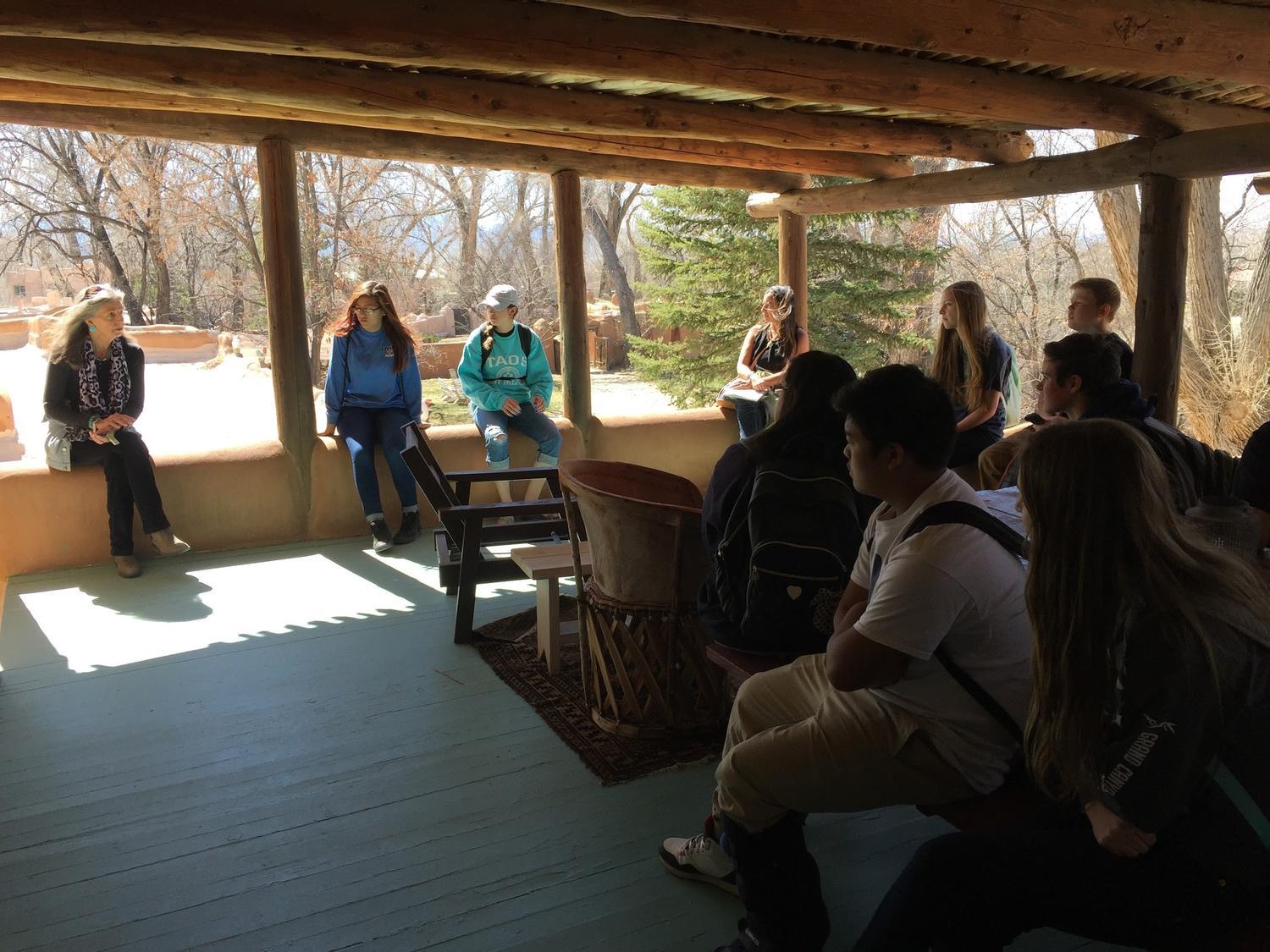 On the 16th, we traveled to the Mabel Dodge Luhan house. Our tour guide, Judy, went into detail about Luhan’s life and experiences. Mabel built her magnificent house on her 12 acres of meadowland, two miles from the Taos Pueblo. As we toured her house, we learned about Luhan and her engaging life filled with finding her spiritual well being. She organized and associated with the Taos art colony. She was one of the many influential women who traveled and detached from their lavish lives in New York. In her lifetime she married four men. Her fourth husband was a native Pueblo Indian named Tony Luhan. They lived in the house that is nestled today in dead end streets, still surrounded by giant cottonwoods and impressive vistas. In addition to the MDL House, we also visited the Kit Carson museum, where we came in contact with the difficult concept of bias and differing perspectives. The Kit Carson museum expressed their extremely positive outlook on Carson’s life and his journeys, whereas many others voiced only contempt for this well-known historical figure. Given the varying perspectives, we all have to look at the facts and come to our own conclusions about Kit Carson’s legacy.
On the 16th, we traveled to the Mabel Dodge Luhan house. Our tour guide, Judy, went into detail about Luhan’s life and experiences. Mabel built her magnificent house on her 12 acres of meadowland, two miles from the Taos Pueblo. As we toured her house, we learned about Luhan and her engaging life filled with finding her spiritual well being. She organized and associated with the Taos art colony. She was one of the many influential women who traveled and detached from their lavish lives in New York. In her lifetime she married four men. Her fourth husband was a native Pueblo Indian named Tony Luhan. They lived in the house that is nestled today in dead end streets, still surrounded by giant cottonwoods and impressive vistas. In addition to the MDL House, we also visited the Kit Carson museum, where we came in contact with the difficult concept of bias and differing perspectives. The Kit Carson museum expressed their extremely positive outlook on Carson’s life and his journeys, whereas many others voiced only contempt for this well-known historical figure. Given the varying perspectives, we all have to look at the facts and come to our own conclusions about Kit Carson’s legacy.
 While half of our group visited the Carson museum the other half had the experience of meeting Patience Heyl, a famous painter. Patience expresses her voice on a canvas if she has a message to share through watercolor and oil painting. Patience talked to our groups about freedom and expressing yourself in your own way. She expressed her feeling through art, and she was free with it. She understood that being perfect is not what we should be focusing on. It’s about being free, and if your art doesn’t turn out exactly how you wanted it, it still makes you feel great and relaxed after you’ve done enough. A lot of our students mentioned how painting made them feel happy, and I think that’s important for us because as students, we get really stressed, and watercolor painting seems to free and calm our minds. Patience influenced us all and was very welcoming.
While half of our group visited the Carson museum the other half had the experience of meeting Patience Heyl, a famous painter. Patience expresses her voice on a canvas if she has a message to share through watercolor and oil painting. Patience talked to our groups about freedom and expressing yourself in your own way. She expressed her feeling through art, and she was free with it. She understood that being perfect is not what we should be focusing on. It’s about being free, and if your art doesn’t turn out exactly how you wanted it, it still makes you feel great and relaxed after you’ve done enough. A lot of our students mentioned how painting made them feel happy, and I think that’s important for us because as students, we get really stressed, and watercolor painting seems to free and calm our minds. Patience influenced us all and was very welcoming.
On the 17th, we all visited Taos native literary and visual artist Anita Rodriguez in her home to hear her stories behind her art and an article she had written about the colonization of art in the Taos area. She focused mainly on racism in her article and in our discussion, and it moved all of us in some way. We heard about how she almost got killed twice because of racism and what we, as young people, need to do in order to stop it. Some ways to do that are to educate ourselves about it, to speak up, to stand up if we see it, and to also educate ourselves about our own backgrounds. Anita’s art is focused on death and the relationship with Mexican culture. Her paintings have amazing stories behind them and hidden messages that are witty. She has a bright personality and expresses that through her paintings with bright and vibrant colors. We enjoyed meeting her and asking her questions because she went above and beyond with her answers that left us in awe.
Follow all the student ECS Blogs on Campus News!




